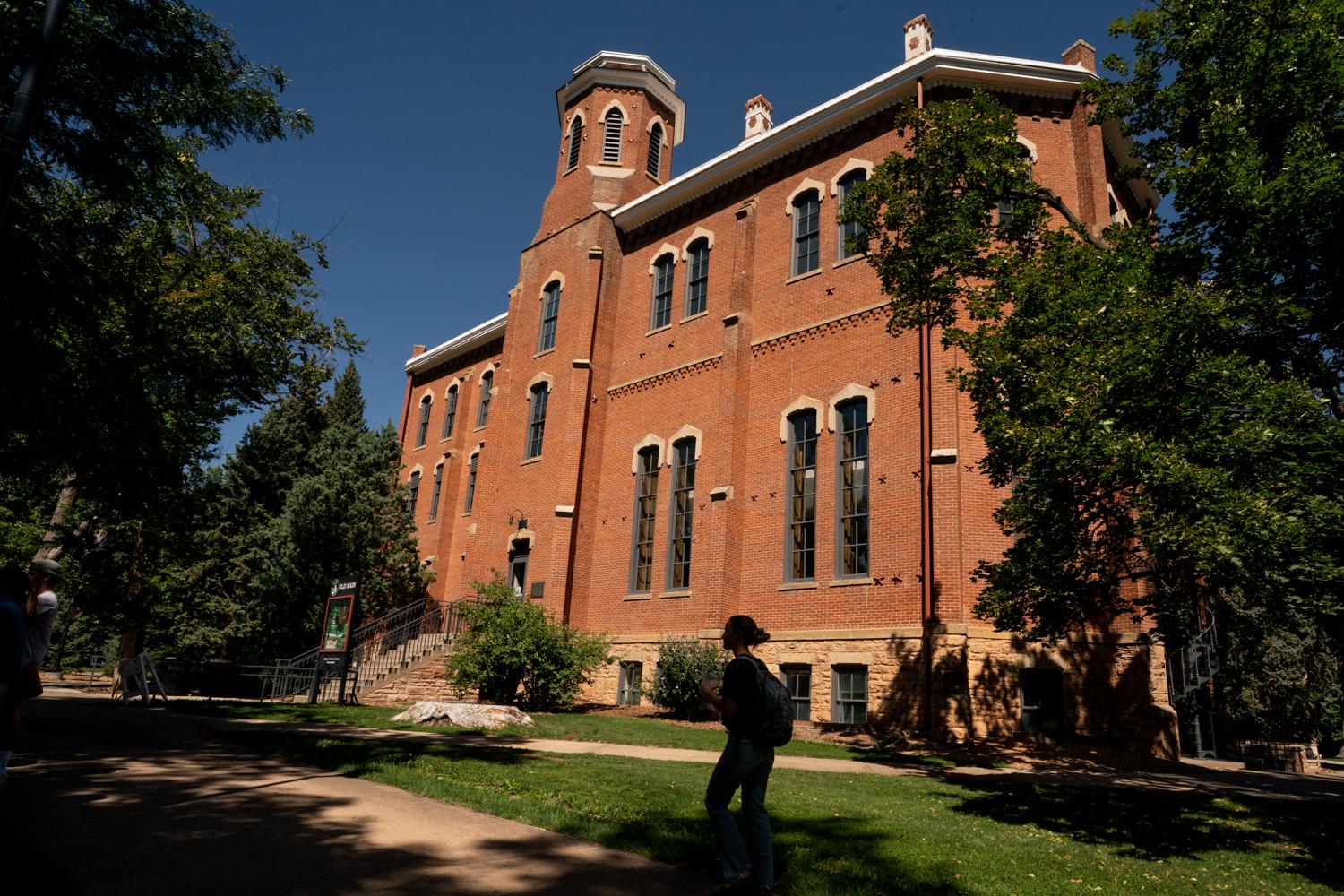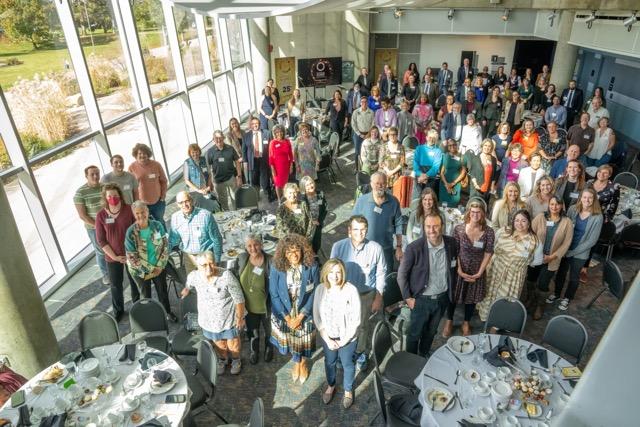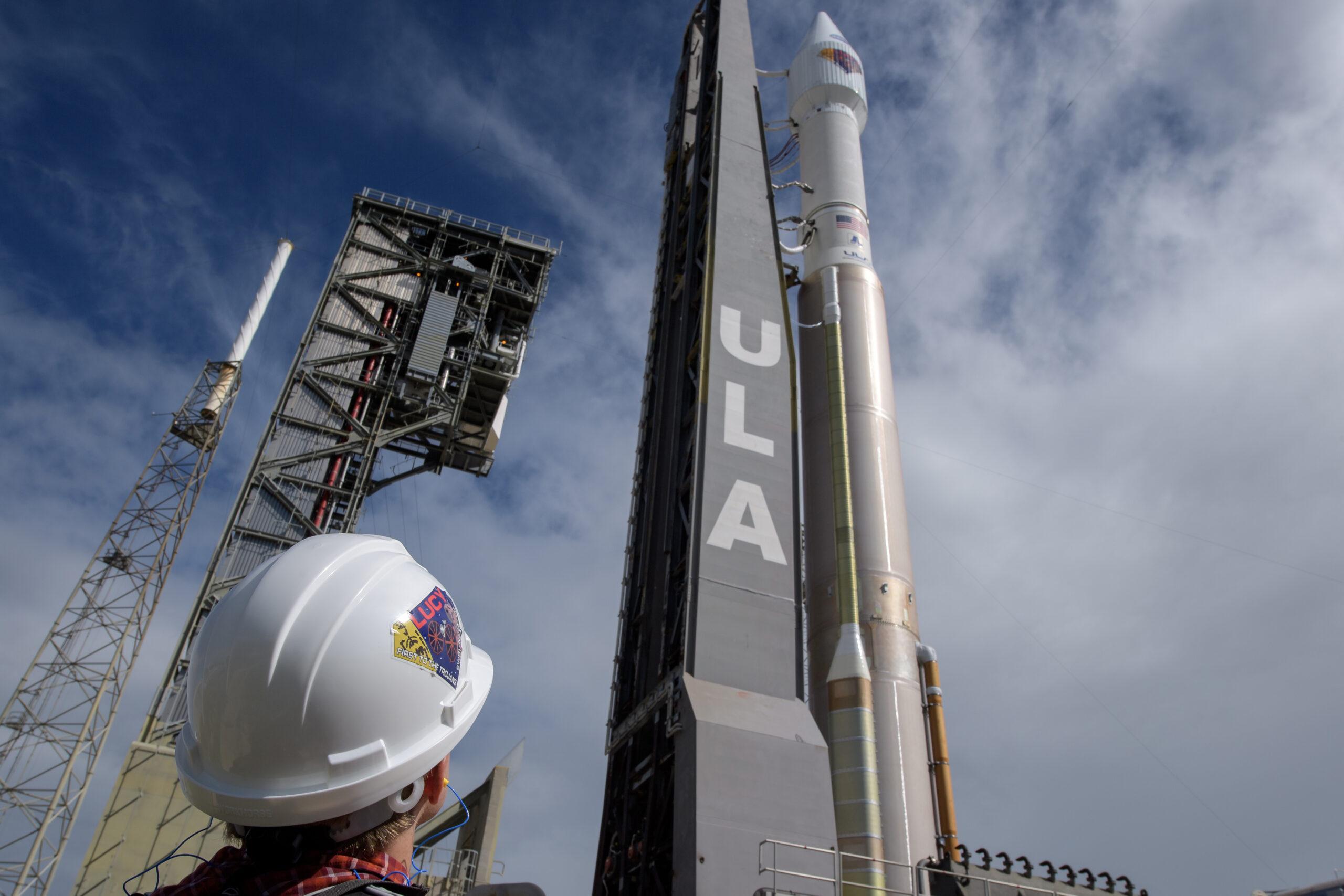
Updated at 11:35 a.m.
A NASA spacecraft that was built in Colorado is on its way to visit eight asteroids near Jupiter. The spacecraft, named Lucy, is on board an Atlas V rocket that launched from Cape Canaveral in Florida in the early morning hours of Saturday. It will travel eight billion miles over the next 12 years.
The asteroids, known as the Trojans, share Jupiter’s orbit around the sun. “They've been there for about four and a half billion years. And so they’re planetesimals that were the formation of the solar system,” said Richard Lipe, Lucy’s program director at Lockheed Martin in Littleton, where the spacecraft was built.
Planetesimals are small bodies of collected gas and dust thought to have orbited the Sun during the formation of the planets. NASA believes that studying these celestial fossils will help scientists understand the early days of our solar system. The mission is named after a fossilized hominid skull, dubbed Lucy, that sparked insight into human evolution.
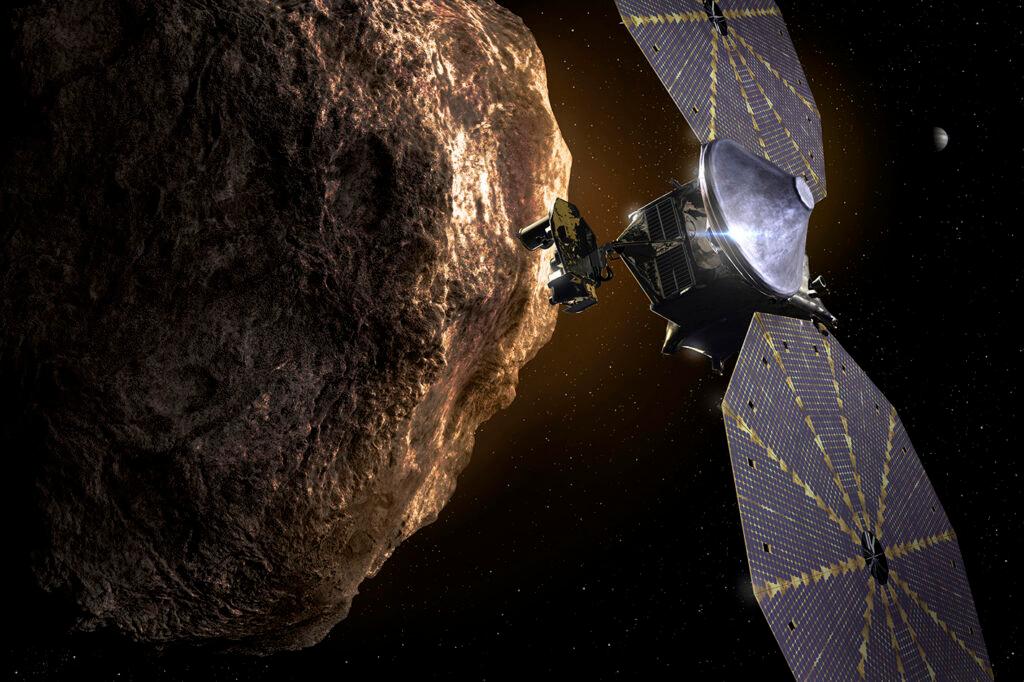
Lucy will return to Earth three times.
Each fly-by provides the spacecraft with a “gravity assist,” which uses Earth’s gravity as a slingshot to hurl Lucy through space. “The Earth gravity assists are what we use to gain velocity on the vehicle,” said Lipe, who described the trajectory as “quite elegant.” “If we didn't have those Earth gravity assists, we'd have to have five times as much fuel on the spacecraft.”
The asteroid visits are drive-bys, not landings.
“Landing takes a lot of fuel, which we don't want to take with us because it's heavy,” explained Lipe. “So we will be flying by at about 600 miles above the surface of the asteroids.” The spacecraft will take pictures and use a thermal emission spectrometer to gather information about the composition of each asteroid. From a distance, the asteroids seem to be made of different materials - some more carbon heavy, others perhaps containing water - and scientists are interested to see if that holds true upon closer inspection. And if so, researchers will want to think about why.
Lockheed Martin has built multiple spacecraft for NASA over the years, which their engineers used as a blueprint for Lucy — with some mission-specific design changes. Lipe said the most important upgrade on Lucy is its solar panels. When fully unfurled, the panels are as tall as a four-story building, but because the Trojan asteroids are so far from the Sun, the panels will only produce about 500 Watts of power. “You can't even run your hairdryer on that kind of power,” said Lipe. “So we've designed this spacecraft to be very power efficient.”
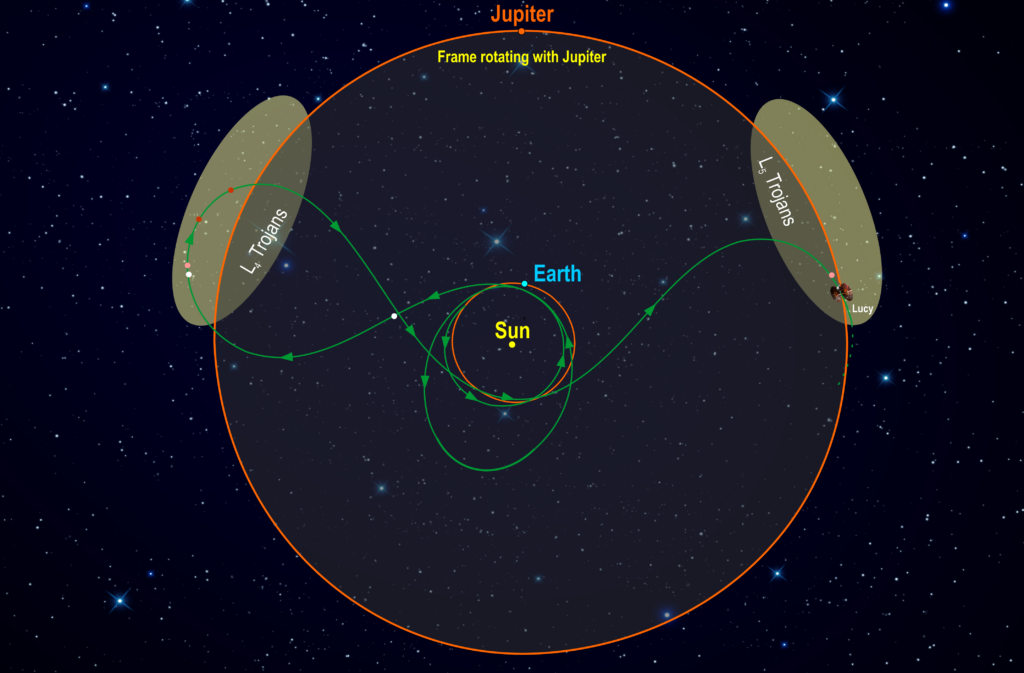
Lucy could also have Colorado license plates.
The spacecraft wasn’t just built in Littleton, it will be flown from there throughout its mission. The mission’s principal investigator, or lead scientist, is Harold Levison at Southwest Research Institute in Boulder; even the launch will be handled by a Colorado company, United Launch Alliance. While such a complex mission involved many people around the country, Lipe estimates that more than 200 Coloradans have worked on Lucy.
Lucy began her mission early Saturday morning.
The spacecraft successfully launched into the sky at 5:34 a.m. EST.
Related stories
- New NASA Mission To Distant Asteroids Will Be ‘Made In Colorado’ ?
- CU scientists will work with the United Arab Emirates to build a space probe that could explore the origins of the universe
- Sorting Through Space Debris Orbiting The Earth ?
- Lockheed Martin Is Developing Moon Cars With General Motors In Hopes NASA Will Want Them



